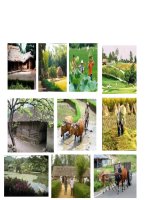unit 2 - listen and read
Bạn đang xem bản rút gọn của tài liệu. Xem và tải ngay bản đầy đủ của tài liệu tại đây (2.69 MB, 29 trang )
CLOTHING
CLOTHING
UNIT
UNIT
TWO:
TWO:
Lesson 1: Listen and read
Lesson 1: Listen and read
Lesson 1: Listen and read
Lesson 1: Listen and read
Tuesday, September 6
th
, 2011
Guessing words
Guessing words
:
:
fed
c
b
a
a / Where does she come from ?
J
A
P
A
N
b/ Where is she from ?
b/ Where is she from ?
V I E T AN M
C/Where does he come from?
S C O
T
L
A N
D
d/ Where does she come from ?
d/ Where does she come from ?
I
N D I A
e/Where does he come from?
A
M E
R
I
C A
f/Where does she come from ?
A A B I AR
I/
I/
Getting started
Getting started
:
:
a - She comes from Japan.
b - She comes from Vietnam.
c - He comes from Scotland.
d - She comes from India.
e - He comes from the USA (America).
f - She comes from (Saudi) Arabia.
Decide where each person what he / she
Decide where each person what he / she
is wearing
is wearing
Japan/Kimono
Vietnam/Ao dai
Scotland/Kilt
India/Sari
The USA/Jeans
Arabia/ Veil
1
32
4
5 6
Ao dai
is slit
on the
sides
Ao dai
is slit
on the
sides
xeû taø
loose
pants
loose
pants
Quaàn daøi
Quaàn daøi
Designers
have added
these
patterns to
the Ao dai.
hoa vaên
ex: Ao dai is a unique traditional
dress of Vietnamese people.
-unique (adj.): ñoäc ñaùo
The designers have taken inspiration
from Vietnam’s ethnic minorities.
ex: To Huu is a great poet in Vietnamese
Literature. He has many famous
poems.
Unit 2: CLOTHING
Unit 2: CLOTHING
LESSON 1
LESSON 1
1. Vocabulary:
-
a long silk tunic:
-
slit (n):
-
inspiration (n):
-
ethnic minority (n):
-
a pattern:
-
a poet:
-
wear-wore-worn:
-
convenient:
đường xẻ
cảm hứng
dân tộc thiểu số
hoa văn
Áo lụa dài rộng
nhà thơ
mang, mặc
tiện lợi
Listen and read the text on
Listen and read the text on
page 13 & 14, pay attention to
page 13 & 14, pay attention to
the pronunciation of difficult
the pronunciation of difficult
words.
words.
Listen again,
Listen again,
check the meaning of the text
check the meaning of the text
.
.
1/ THE PRESENT PERFECT TENSE:
S + (be) + V3/ Ved (past participle )
Eg: They have mentioned the ao dai in poems.
S + have / has + V3/Ved ( past participle)
2/ PASSIVE VOICE : Câu bị động
Eg: Ao dai was frequently worn by both men and women.
Thì Hiện Tại hoàn thành
The majority of Vietnamese people prefer to wear ao dai at work.
For a long time the ao dai has been the subject of poems, novels, and songs.
The “ao dai” is described as a long silk tunic with slits up the sides worn
over loose pants
All designers have modernized the “ao dai” by printing lines of poetry
on it.
T
T
F
F
TRUE - FALSE QUIZ:
Another alternative to add symbols such as suns, stars, crosses and stripes.
T
modern clothing at work.
Some
Complete the sentences
Complete the sentences
1. For a long time the ao dai has been the subject of
2. The ao dai is described as a
3. The majority of Vietnamese women prefer
4. Some designers have modernized the ao dai by printing
5. Another alternative is to add
lines of poetry on it.
to wear modern clothes at work.
symbols such as suns,
stars, crosses and
stripes.
poems, novels and songs.
long silk tunic with slits up the
sides worn over loose pants.
1. Who used to wear the ao dai by tradition ?
2. Why do the majority of Vietnamese women
prefer to wear modern clothing at work
these days ?
3. What have fashion designers done to
modernize the ao dai ?
Questions
Questions
1. Who used to wear the ao dai by tradition ?
Traditionally, men and women
Traditionally, men and women
used to wear the
used to wear the
ao dai.
ao dai.
Answer the questions
Answer the questions
2. Why do the majority of Vietnamese
women prefer to wear modern clothing
at work these days?
Because it is more convenient
Because it is more convenient
.
.









